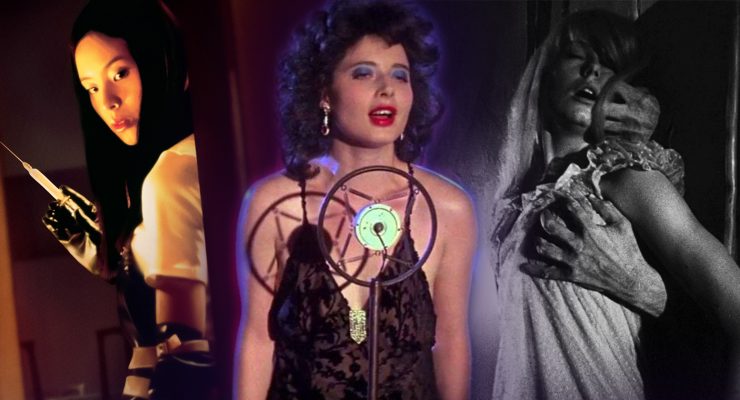To Sleep So as to Dream, 1986.
Directed by Kaizo Hayashi.
Starring Shiro Sano, Koji Otake, Morio Agata, Kenji Endo, Fujiko Fukamizu, Baiken Jukkanji, and Moe Kamura.
SYNOPSIS:
To Sleep So as to Dream is a unique black-and-white Japanese film from 1986 that seeks to pay homage to the silent and film noir eras while delivering a story that could be best described as “Here is Japan’s equivalent to David Lynch.” It’s never been available on home video outside of Japan until now, and Arrow pulled out all the stops for this one, commissioning some new bonus features for the disc and including a booklet reminiscent of the ones Criterion puts in its releases.
It’s easy to assume that Japanese cinema is nothing but anime, Kurosawa films, and monster flicks, but that country’s industry is as diverse and interesting as the movie businesses in many other countries. Case in point: Kaizo Hayashi’s To Sleep So as to Dream, a 1986 film that’s never seen a home video release outside Japan until now. If you’re looking for a one-sentence summary of it, here’s a good one: Imagine a movie made by Japan’s version of David Lynch. If that intrigues you, keep reading.
This 83-minute movie’s plot is fairly simple: a pair of detectives with a penchant for hard-boiled eggs are hired by an aging actress from the silent film era to find her kidnapped daughter. The trail leads them to the studios of M. Pathe, which was a real Japanese film studio in the early 20th century. From there, “things begin to get a little strange,” as the back cover of this Blu-ray release states. A film-within-the-film from the silent era, one with a missing ending, plays a major role in the final act of the story as the division between the real world and the world of the film-within-the-film begins to break down.
Not only is To Sleep So as to Dream in black-and-white, but it’s also largely silent, with the only sounds coming from the environment – when characters talk, cards reveal their dialogue, as in a silent film. It’s an intriguing way to use the film language of the silent era to connect a modern story to the pre-talkie days, with a connection to 1950s era film noir thrown into the mix, and it results in this movie being one of those that stay with you for days afterward. It’s certainly worth additional viewings to absorb all of it.
The film was restored for this new Blu-ray release from Arrow, which commissioned some new bonus features in addition to porting over a commentary by director Kaizo Hayashi and star Shiro Sano from a 2000 DVD edition in Japan. That older track is well worth a listen, as Hayashi talks about making his first film on a shoestring budget (let’s stop for a moment and marvel that he made this kind of movie as his first one) and Sano discusses the challenges of delivering dialogue that would be replaced by title cards, among other things. The other bonus features include:
- A new commentary track by Japanese film experts Tom Mes and Jasper Sharp: The pair cover the country’s movie history from the silent days through the 1980s, with a specific focus on how many Japanese movies from the 80s are overlooked during the modern home video era.
- How Many Eggs? Shiro Sano Talks (29 minutes): One of the stars of the film looks back on the making of the movie in this new interview. Among other things, he reveals, as you may have already guessed, that the hard-boiled eggs are a reference to hard-boiled detectives.
- Talking Silents: Benshi Midori Sawato Talks (18 minutes): A Benshi is a silent film narrator in Japan, and Midori Sawato is one of them. She talks about the specifics of her craft. This is a new interview too.
- Midori Sawato Performs The Eternal Mystery (7 minutes): Sawato returns to narrate The Eternal Mystery, which is the film within the film.
- The Restoration of To Sleep So as to Dream (4 minutes): Director Kaizo Hayashi is seen examining the restoration work being done on the film in 2018.
- Fragments from Japan’s Lost Silent Heyday (2.75 minutes): These are clips from early Japanese silent films, courtesy of the Kyoto Toy Museum’s archives.
A pair of film trailers, one for the original release and one for the English-language restored re-release, and an image gallery round out the disc. Arrow also included a physical booklet that has details about this release, along with a statement from Hayashi and an essay by Yale University professor Aaron Gerow.
Flickering Myth Rating – Film: ★ ★ ★ ★ / Movie: ★ ★ ★ ★
Brad Cook















